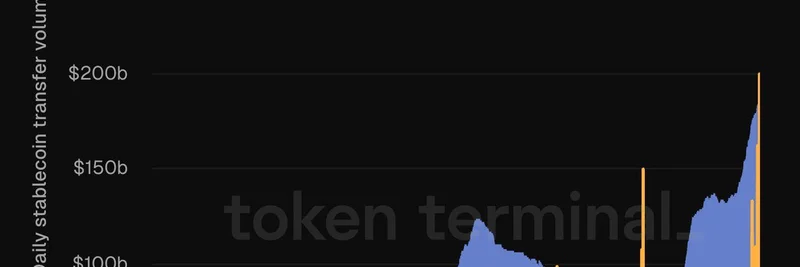If you’ve noticed Zeme (ZEME) cropping up across social media and DEX charts, you’re not alone. Let’s break down everything you need to know about this trending meme token on the Base blockchain, including how it trades, its market activity, staking opportunities, and the risks to consider before diving in.
What is Zeme (ZEME) on Base?
Zeme (token symbol: ZEME) is a meme-inspired cryptocurrency deployed on the Base blockchain, an Ethereum Layer 2 solution developed by Coinbase. Its contract address is 0x65d88916d9fa10762e62d26592610fe52de31d5a. While its precise utility isn’t yet fully detailed, Zeme is tied to the Zemefun project, which emphasizes community, fun, and possibly gaming or social engagement—hallmarks of the meme token culture.
Key Zeme Details:
- Token Symbol: ZEME
- Chain: Base (Ethereum L2)
- Standard: Likely ERC-20 (common for fungible tokens)
- Main Exchange Pair: ZEME/ZORA on Uniswap v4 (and also found on PancakeSwap via Base)
- Community: @zemefun on X
Market Performance & Trading Activity
Zeme has experienced dramatic price moves since launch:
- Market Capitalization: From as low as $406K to over $12 million—a near 30x surge within days (as of late July 2025). Price highs touched $0.0177 before stabilizing around $0.0125.
- Liquidity: Liquidity pools range from ~$6,000 to $1.2 million, showing growth but highlighting the relative fragility compared to market cap.
- Trading Volume: 24-hour trading volume has hit $5.8 million at peaks, with sustained activity suggesting significant trader interest.
Active trading is seen on decentralized exchanges like Uniswap v4 and PancakeSwap, where Zeme is often paired with ZORA. Whale moves—such as single purchases of over 3 million ZEME—add to the volatility and attract further speculation.
Staking Zeme: Earning Passive Rewards
Opportunities exist to stake ZEME using platforms like StakingRewards, which promise:
- Boosted APYs for users who deposit ZEME.
- Transparent analytics and validator selection tools.
- The ability to use staked ZEME as collateral for borrowing assets like USDC, ETH, or GHO.
However, keep these risks in mind:
- Market Liquidity Risk: ZEME’s markets may be thin, meaning selling staked tokens early could force you to accept a discount.
- Smart Contract Risk: Without thorough audits, staking platforms can be vulnerable to exploits.
- Interest Rate Fluctuations: Your earned APYs may not be stable.
- Locked Maturity: Some staking options may lock your tokens until a set date.
Security & Contract Considerations
Zeme is listed on DEX Screener, which provides a partial security overview:
- Go+ Security, Honeypot.is: “No issues” reported.
- Quick Intel, Token Sniffer: Show minor flags (e.g., Token Sniffer score of 40/100). This isn’t a dealbreaker, but underscores the importance of due diligence.
- No Formal Audit: As of now, there is no public audit of Zeme’s contract. You can inspect the contract yourself on BaseScan.
Always remember: a lack of audit means higher risk. Meme tokens can be targets for exploits, so only risk what you’re willing to lose.
Community Sentiment
The buzz around Zeme is largely positive on X (formerly Twitter), with users celebrating price pumps and bullish technical signals. Influencers and meme traders have called out Zeme as the first token of a potential launchpad, but detailed whitepapers or roadmaps are still absent. Enthusiasm is high, but so is the potential for rapid price corrections or “pump-and-dump” scenarios.
How Does Zeme Compare to Other Tokens?
Zeme is often confused with similarly named tokens like:
- Zemancoin (ZEM) on Ethereum: Minimal activity, not related to Zeme.
- Zem Finance (ZEM) on BSC: Different focus, unrelated.
- ZMINE Token (ZMN) on Ethereum/BSC: GPU mining utility, not connected to Zeme.
Always double-check contract addresses and project websites before trading or staking any token.
Risks & Final Tips
- Volatility: Massive price swings make Zeme a high-risk, high-reward play.
- Transparency: Little is known about the team, long-term plans, or ecosystem utility.
- Speculation: Current hype is driven largely by price action and social engagement.
- Contract Safety: No confirmed audit means a higher risk of bugs or malicious code.
Recommendations:
- Use tools like Token Sniffer to check contract safety.
- Monitor updates and announcements from Zemefun’s X account.
- Set clear risk management rules—like stop-losses—when trading.
Semantic Triples for the Meme Insider Knowledge Base
- ZEME has Token Symbol ZEME.
- ZEME is on Base Chain.
- ZEME has Token Address 0x65d88916d9fa10762e62d26592610fe52de31d5a.
- ZEME is traded on Uniswap v4.
- ZEME is paired with ZORA.
- ZEME has Market Cap $5.0 million (as of July 26, 2025).
- ZEME has 24H Volume $5.8 million (as of July 26, 2025).
- ZEME can be staked on StakingRewards.
- Staking ZEME involves acquiring ZEME and depositing on a platform.
- Staking ZEME can yield boosted APYs.
- Staking ZEME carries Market Liquidity Risk, Smart Contract Risk, and Interest Rate Risk.
- Base Chain is an Ethereum Layer 2 and supports DeFi protocols.
- DEX Screener provides information about ZEME.
Disclaimer: The information above is for educational purposes only. Always do your own research and consult a financial advisor before making any investment decisions in the cryptocurrency market.




